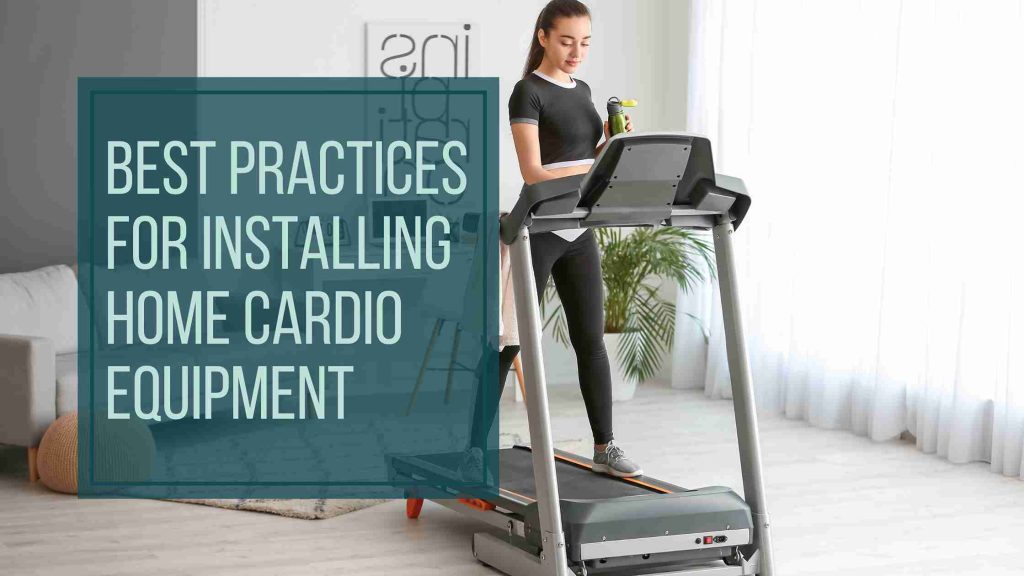Bringing cardio equipment into your home can be a game-changer for your health and fitness goals. Whether you’re setting up a stationary bike, treadmill, or elliptical, proper installation is crucial—not just for performance, but for safety, durability, and ease of use. A poor setup can result in damaged floors, unstable machines, or even injury.
In this guide, we’ll break down the essential best practices for installing your equipment correctly and efficiently. From choosing the right location to protecting your home and avoiding common errors, here’s everything you need to know to master your cardio equipment setup.
Positioning for Safety
The placement of your cardio equipment can impact your workout comfort, your home’s safety, and the machine’s longevity. Before assembling anything, take time to consider where and how your equipment will be used.
Allow for Movement and Access
Many people underestimate how much space cardio machines require—not just for the machine itself, but for safe operation. Make sure to leave enough room:
- Treadmills and ellipticals: Allow at least 2 feet on each side and 4 feet behind the machine
- Stationary bikes: Leave at least 1.5 feet of clearance on each side
- Rowing machines: Ensure you have enough space to fully extend your legs and arms
Having adequate space prevents accidents, especially in tight areas like basements, spare bedrooms, or garages.
Avoid Cluttered Areas
Try to place your equipment in a space free from shelves, cords, or anything breakable. If your elliptical’s arms swing or your treadmill has handrails, nearby furniture could pose a risk.
It’s also best to avoid high-traffic zones. Children or pets running nearby could be injured if they bump into the machine or step on moving parts.
Choose a Level Surface
Make sure the surface is completely level to avoid shaking, wobbling, or accelerated wear on the machine. Uneven floors can also impact your form while working out.
If your flooring isn’t perfectly even, consider placing shims under certain parts or using adjustable feet if your machine supports them. Most elliptical installation service professionals ensure level positioning as a standard part of their job.
Floor Protection Ideas
Your home’s floors are just as important as the equipment itself. Heavy cardio machines can scratch hardwood, tear carpet, or dent vinyl if you don’t use the right protective measures. Here’s how to keep your floor safe and stable.
Use Equipment Mats
One of the easiest ways to prevent damage is to place a high-density rubber mat beneath your machine. These mats:
- Reduce noise and vibration
- Prevent slipping and sliding during intense workouts
- Protect floors from scratches, sweat, and pressure marks
Choose a mat slightly larger than the machine for full coverage. Make sure it’s thick enough (usually ¼ to ½ inch) to absorb impact, especially for heavier machines like treadmills and ellipticals.
Consider Interlocking Floor Tiles
For multi-use gym areas, interlocking foam or rubber tiles provide both protection and comfort. They’re great for people who want a more modular setup or need shock absorption for high-impact activities.
Just be sure the tiles are non-slip and tightly connected so the machine stays steady.
Clean the Floor First
Before placing anything down, clean the floor area thoroughly. Small debris like rocks or sand can dig into surfaces under pressure and may cause long-term damage or instability.
Avoiding Setup Errors
Assembling cardio machines may seem straightforward, but many people make small mistakes that affect the equipment’s performance and safety. Following best practices and avoiding shortcuts is key.
Read the Manual Carefully
This might sound obvious, but many setup errors come from skipping over the instruction manual. Take the time to read the full guide before beginning. Most brands provide specific tools, steps, and safety warnings tailored to their equipment.
If the machine includes wiring or a display screen, make sure you follow instructions about cable connections and battery placement to avoid malfunctions.
Use Proper Tools
Never force bolts or screws into place with the wrong tools. This can strip threads or misalign parts. Using the right wrenches and screwdrivers ensures that everything fits snugly and securely.
For larger machines, you may need a second person to help lift parts into place. For example, during elliptical installation service, techs often work in pairs to prevent damage while handling heavy arms and bases.
Follow Weight Limits and Usage Guidelines
Pay attention to user weight limits and the machine’s intended use. For example, not all stationary bikes are built for intense interval workouts or long-distance training. Misusing the machine can lead to breakdowns or personal injury.
Keep a copy of the manual or store it digitally, so you can refer back during future maintenance or if you need to disassemble the unit later.
Secure All Moving Parts
For machines with adjustable resistance or folding features, double-check that locking pins, bolts, and tension systems are secured before using them. A loose bolt on a treadmill incline or a misaligned pedal on an elliptical can quickly lead to problems.
These checks are especially important during stationary bike setup tips, where pedal alignment and saddle stability are critical for safety and comfort.
Final Thoughts
Installing cardio equipment at home can be a smart way to invest in your health—but only if it’s done properly. From choosing a safe location to protecting your flooring and following assembly instructions closely, every detail matters in a successful cardio equipment setup.
When in doubt, don’t hesitate to call in help. A professional elliptical installation service or fitness equipment specialist can ensure your machines are safe, stable, and ready to support your workouts.By following these best practices and using proven stationary bike setup tips, you’ll get more from your equipment and create a home fitness space that’s safe, quiet, and built to last.



